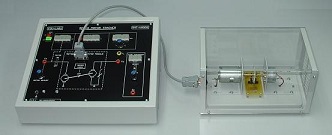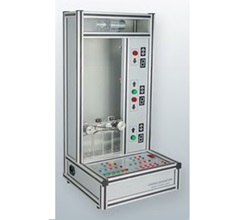Servo Motor Trainer SMT-VM00SDescription
- Description
Description
Features
- Torque-speed characteristics
- Determination of motor parameters – inertia and friction
- Digital display of time constant
- Transfer function evaluation
Introduction
A d.c. servo motor is commonly used as an actuator in many industrial control applications because of its features – large torque and ease of speed variation. The dynamic characteristics of such a system therefore depends on the motor parameters viz., moment of inertia, coefficient of friction, time constant and also the resistance and inductance of the control winding. It is therefore important to experimentally determine the mechanical and electrical parameters of the d.c. servo motor and also to evaluate its transfer function. The present unit is designed to study a small permanent magnet d.c. motor. A still smaller generator directly coupled to the motor is used for the dual purposes of speed signal pick up and providing electrical loading. The shaft speed in rpm is displayed automatically on a 4-digit panel meter. When the motor is suddenly switched ON a novel circuit computes and displays the time constant in milliseconds on a 3-digit panel meter. This avoids the need for an expensive storage CRO. The motor unit is housed in a cabinet with transparent panels, providing a good view of the mechanical system.
Experiments
- Torque-speed characteristics
- Inertia and friction parameters
- Back e.m.f. constant
- Time constant
- Transfer function
Features and Specifications
- Study of a d.c. servo motor
- Small generator for speed pick up and loading
- 4-digit speed display
- 3-digit time constant display
- 3½ digit voltmeter and current meter for d.c. measurement
- IC regulated power supply
- Supporting literature with experiment details Schematic Diagram
Note: Due to products continuous development process, layout and specification may change without prior notices



